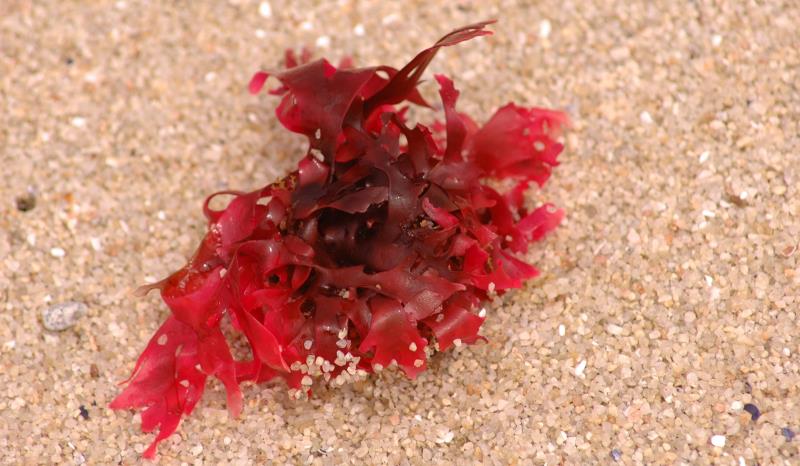The red algae, or Rhodophyta are one of the oldest groups of eukaryotic algae. Approximately 5% of the red algae occur in freshwater environments.
Several species are important food crops, in particular members of the genus Porphyra, variously known as nori (Japan), gim (Korea), or laver (Britain). Dulse (Palmaria palmata) is another important British species. These rhodophyte foods are high in vitamins and protein and are easily grown; for example, nori cultivation in Japan goes back more than three centuries. In East and Southeast Asia, agar is most commonly produced from Gelidium amansii.
Red algae extracts are used for achieving multiple dimensions of brighter, healthy-looking skin. Its extracts are known for its brightening, anti-dark spot correction benefits and Vitamin C richness. Algae (and seaweed) has many cosmetic benefits. Firstly it can stabilize minerals that aid in skin moisturization. Another claims that seaweed provides anti-acne properties without the irritation of over the counter drugs. And yet another type of seaweed may help with skin lightening.
A heathy balanced diet is a primary factor for a healthy skin. Talking of nutrients, it contains high amounts of fiber, protein, and minerals, that are considered an important nutritional food. Moreover, some researchers believe that seaweed, in general, represents the greatest source of vitamins in the world.
Free radicals in atmosphere can damage the skin by trying to grab an extra electron from atoms in the skin. When atoms are taken away from molecules in the skin, it causes damage to our skin’s DNA that can speed along skin aging. This is called the free radical theory of aging. Red Algae or Rhodophytes comprise of the strong antioxidant effect, that counters damage free radicals do to cells. Free radicals are highly reactive substances which burrow their way into healthy cells, causing permanent damage. They are common by-products of normal internal reactions. Furthermore, pollution, UV radiation, and strenuous aerobic exercise have been strongly connected with free radical formation. Skin damage done by free radicals may appear in several forms, changes in skin color (brown spots and broken blood vessels) to weakened skin that looks loose and saggy as a result of damaged elastic fibers. Free radicals can also break down the skin’s collagen and create wrinkles.
Red marine algae have a high content of fiber. Dietary fiber or roughage, includes the parts of plant foods your physical body can’t absorb or digest. It plays an important role in your heart, digestive, and skin health, and may improve glycemic levels (ideally for type 2 diabetics) as facilitate in a healthy weight loss.
Healthy skin is a result of a balanced diet and active lifestyle. Make sure you are a part of it.

